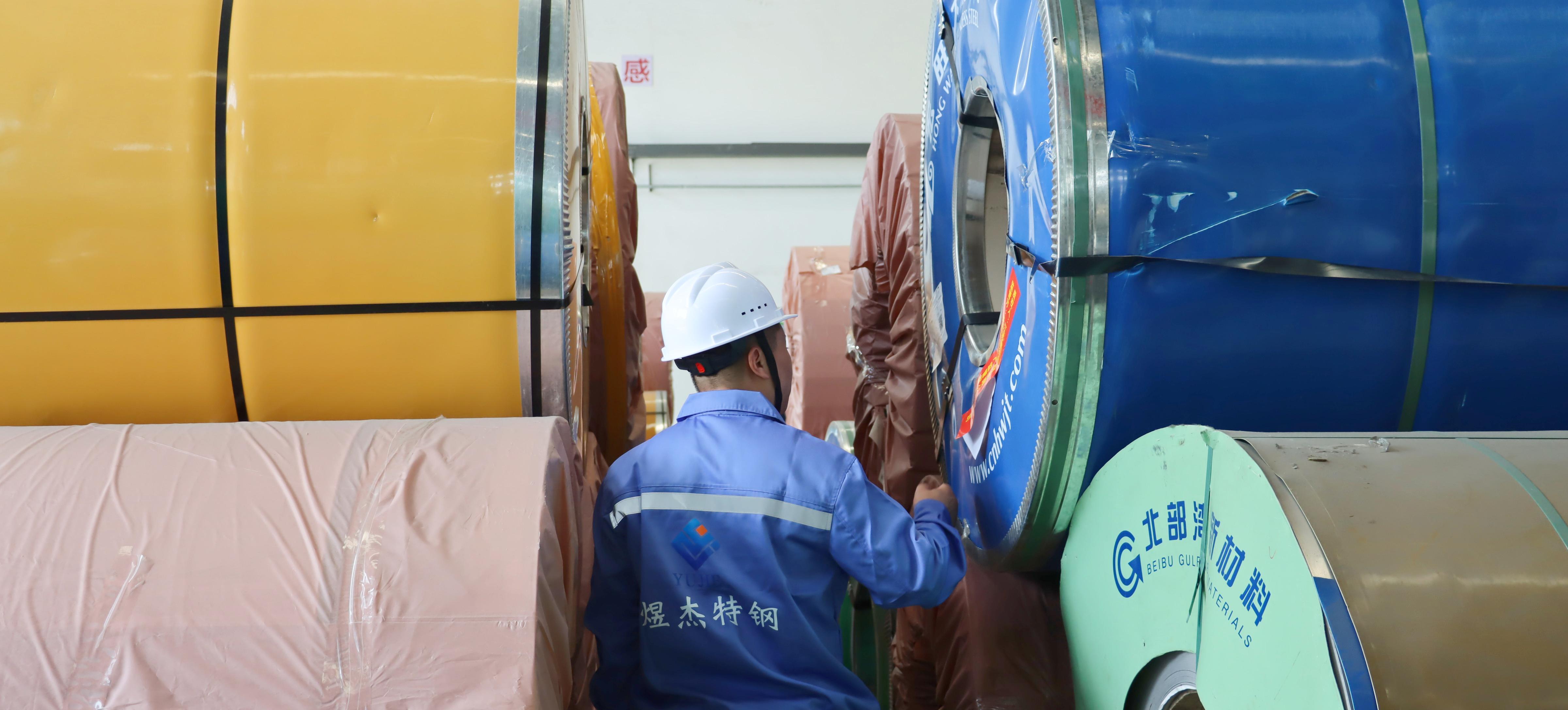FAQs about Stainless Steel
Q1: What is stainless steel sandblasting plate? A1: Stainless steel sandblasting refers to the use of machinery to hit the surface of stainless steel plate with pearl balls of different coarseness at high speed, so that the surface of stainless steel plate presents a sand effect and beautifies the surface of stainless steel plate. The coarseness of sandblasting can be achieved by selecting pearl balls of different coarseness. Before sandblasting, the stainless steel plate can be mirror polished to increase the brightness of the sandblasted stainless steel plate. Q2: How to observe the quality of mirror stainless steel plate? A2: First of all, the brightness. The mirror stainless steel plate with good quality looks radiant. Secondly, the grinding head flower, scratches, horseshoe prints, etc. should be as few as possible; thirdly, the mirror stainless steel plate should be able to truly reflect the image after being laid flat, and there should be no water ripples. Q3: What are the common problems of brushed stainless steel? A3: The thickness of the silk pattern must be consistent with the customer's requirements; secondly, the brightness must meet the customer's requirements; for 2B stainless steel plates with scratches on the surface, it is difficult to eliminate the scratches on the 2B plate after brushing. Q4: What are the common quality problems of mirror stainless steel? A4: Common problems are: 1. The more grinding head flowers, the lower the mirror quality. The grinding head flowers will be more obvious under strong light. It is difficult to achieve 100% no grinding head flowers. 2. Stainless steel plates with a horseshoe print thickness of 0.8mm are more likely to have this problem. Stainless steel plates need to be protected carefully during processing and transportation. 3. Degumming of the protective film. After the protective film of poor quality is torn off, the peeled glue will remain on the mirror stainless steel plate, destroying the mirror quality. Q5: What are the problems that should be paid attention to when cleaning colored stainless steel? A5: Stainless steel products coated with colored PVD film should pay attention to the following matters: a. Although the vacuum-plated PVD film has a certain degree of corrosion resistance, it is still difficult to resist contact with strong corrosive substances such as acids and alkalis. Therefore, during routine maintenance, try not to use cleaning agents containing strong acids and alkalis or strong decontamination ability, such as toilet cleaners, paint strippers, metal cleaning agents, etc. You can use industrial alcohol to wipe gently with a soft cotton cloth. If there is dirt on the surface, you should also use weak acid and weak alkali solvents to deal with it. In addition, if exposed to harsh environments for a long time, or in contact with corrosive liquids for a long time, the PVD film layer is also prone to falling off and other problems, such as swimming pools (containing fluorine), seawater (containing a lot of salt), high temperature and high humidity (steam) and other environments. b. Use of anti-fingerprint varnish. More and more customers choose to spray a layer of transparent anti-fingerprint clear oil on stainless steel products coated with colored PVD film. The effect is very obvious. There is no fingerprint when you touch it, it is easy to clean, and it can also increase the wear resistance and corrosion resistance, killing two birds with one stone. However, the disadvantage is that the color of the sprayed and unsprayed is inconsistent, and the processing requirements are high and the cost is not low, which affects the metal texture of the product and has aging problems. Therefore, you must consider it carefully before use. c. Subsequent processing issues. The PVD film layer has a very good bonding force with the substrate and is not easy to fall off. The product can be subsequently processed by simple mechanical processing, such as shearing, folding, bending, and cutting. However, welding has a great impact on the PVD film layer. The instantaneous high temperature will cause the film layer to fall off and discolor. Therefore, if stainless steel products that need to be welded need to be plated, it is best to make the components first and then plate them. The materials coated with PVD film cannot be used to process and make products. Q6: Does colored stainless steel have color difference problems? A6: The color difference of vacuum ion plated colored PVD film layer is a problem that customers and manufacturers must face and pay attention to at this stage. Because the PVD process equipment is complex and delicate, there are many parameters that need to be controlled. Each parameter may affect the color. In addition, other factors such as the hanging furnace method, product material and surface will also affect the color consistency. In addition, the plated film layer will change slightly in color due to long-term oxidation in the air; the observer will also find that the color will change under different light and angles. Therefore, in the face of possible color deviation problems, customers and manufacturers should communicate more, work together to solve them, and find the best balance.


Add:Dongbeitang Town, Wuxi,Jiangsu Province, China
Contact: zou
WhatsApp:+8613382242731
Copyright © Jiangsu Yujie Steel Group Co.,Ltd
powered by gongwong.com






